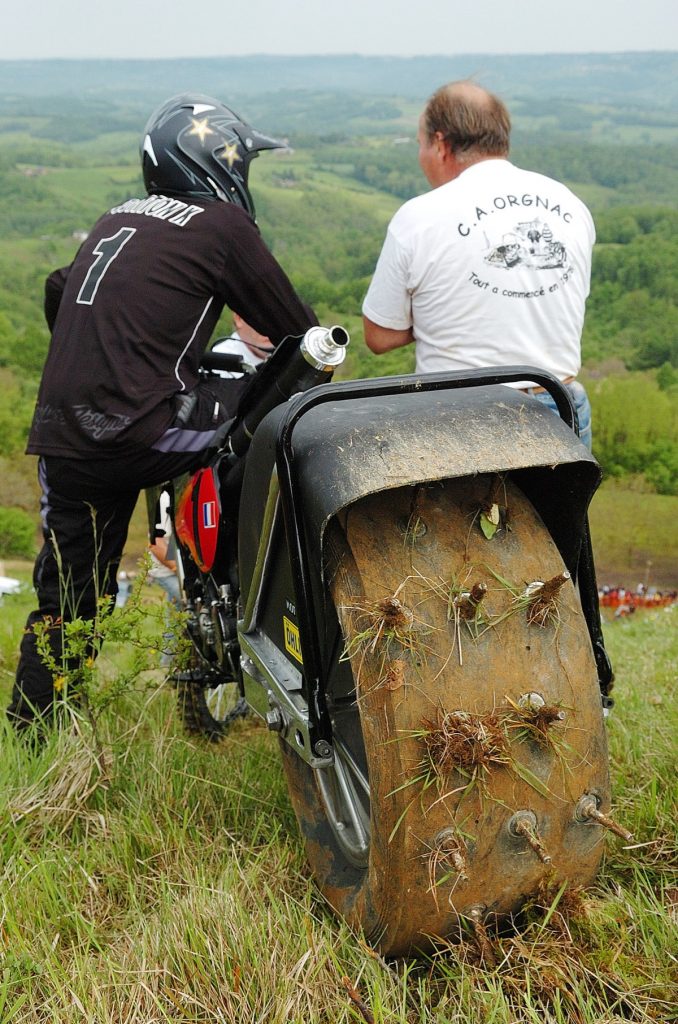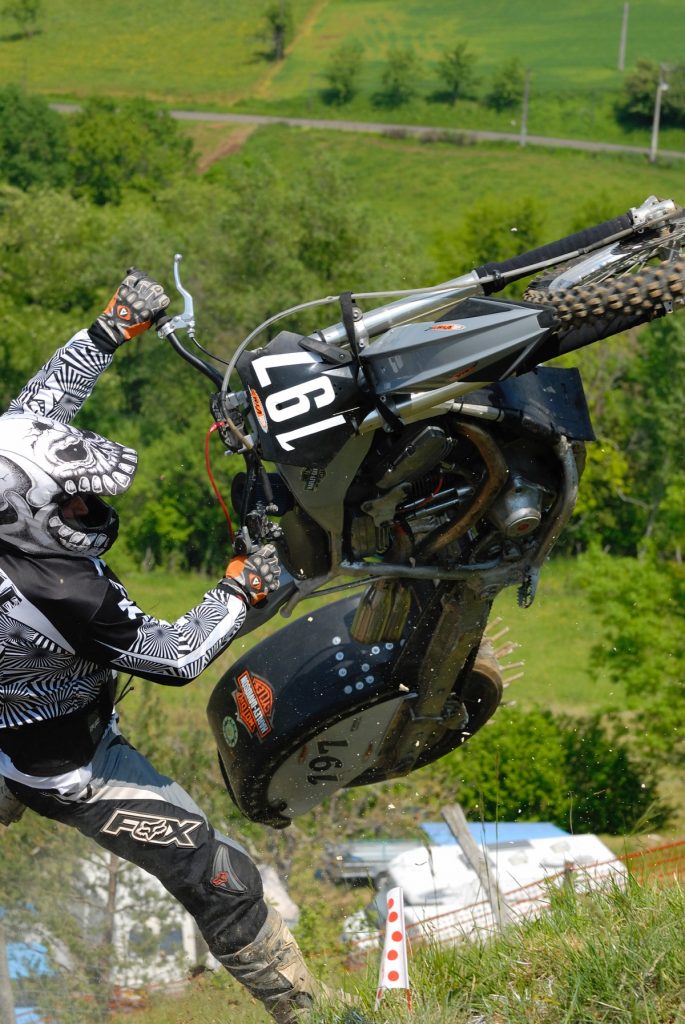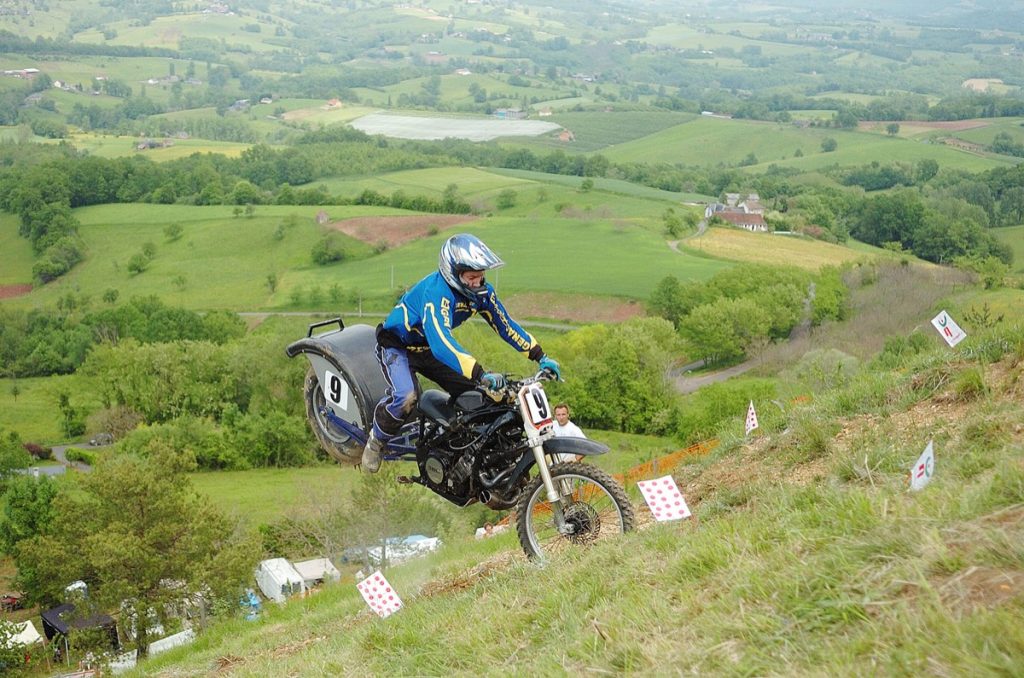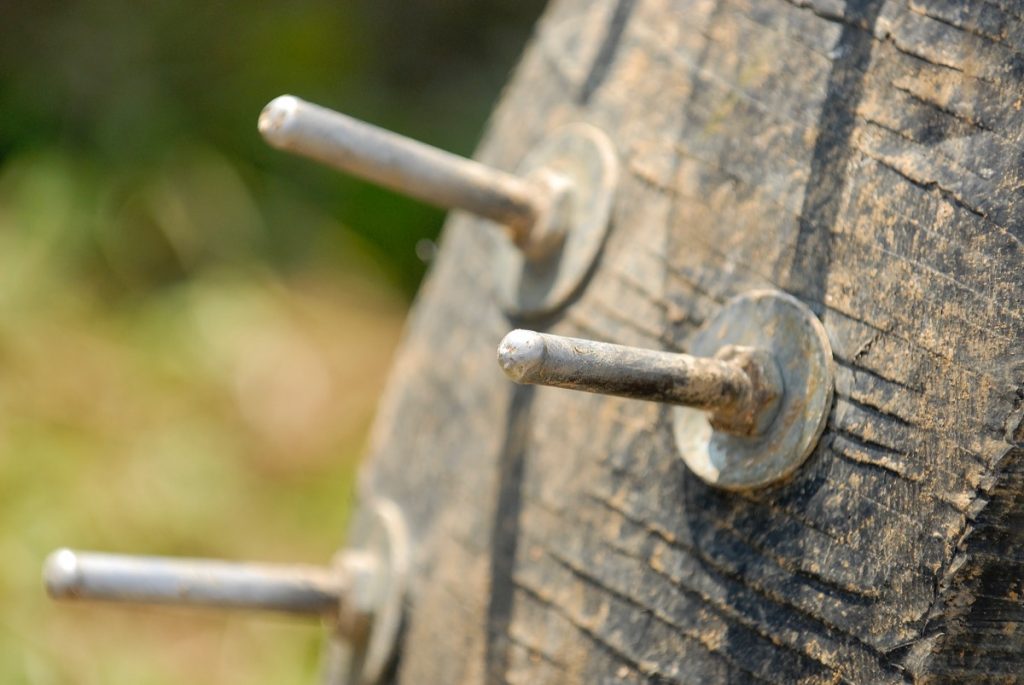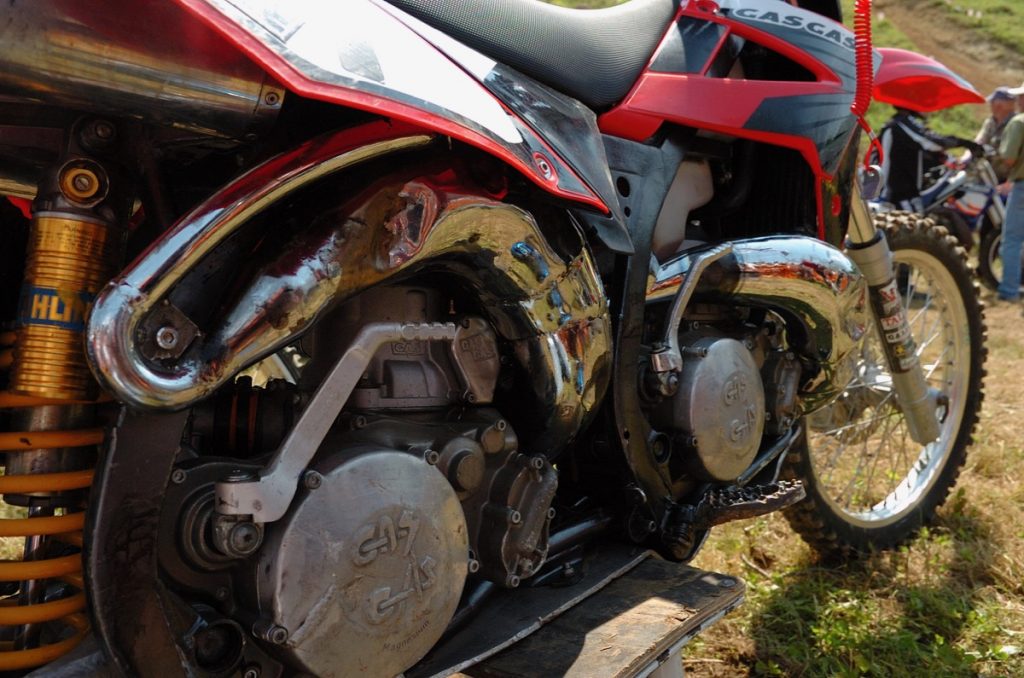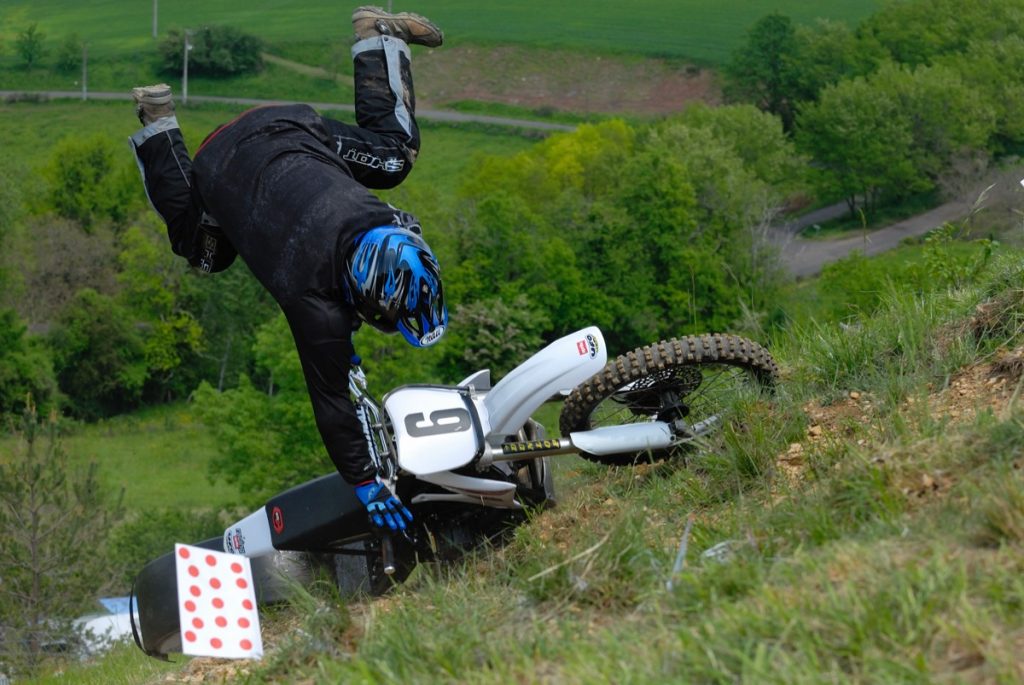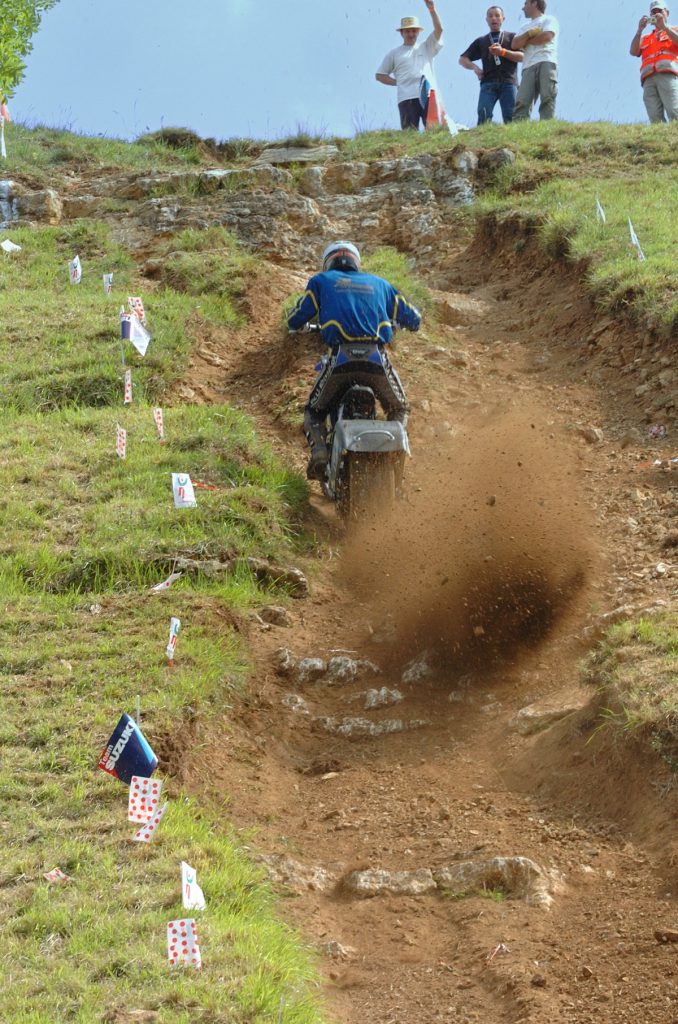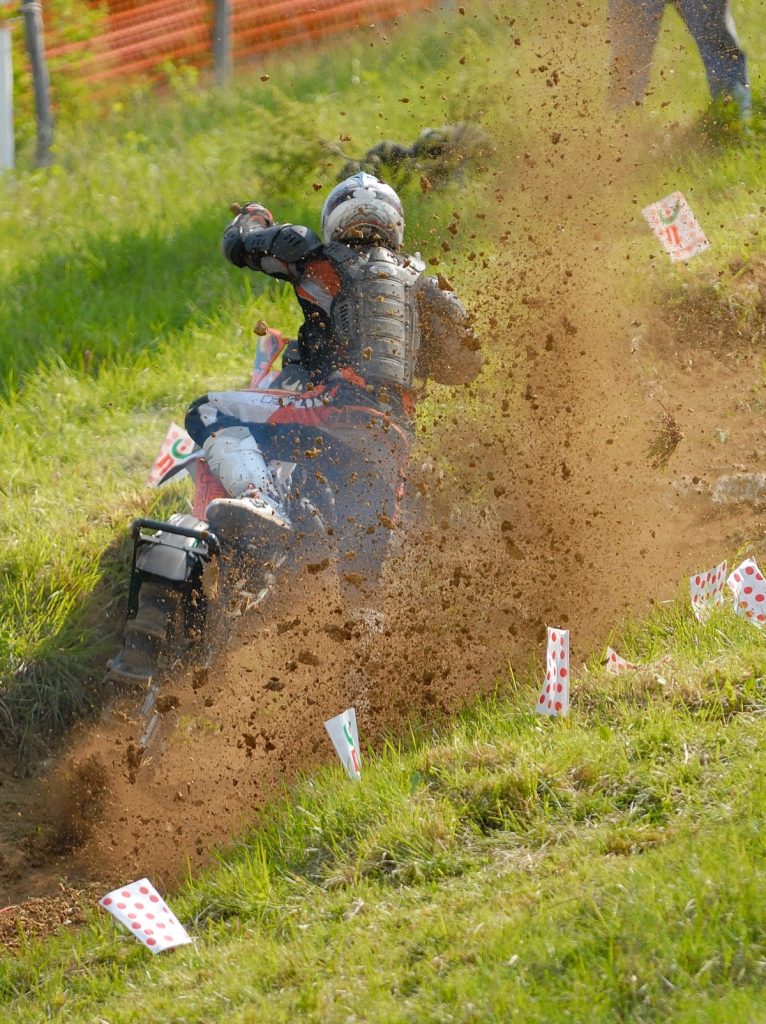I rubbed my eyes. A pair of 300cc Gas Gas two-stroke engines mounted in a ridiculously long dirtbike frame, it looked like a Photoshop job.
WORDS & PHOTOS // FABRICE TULANE
The swingarm was way too long. Then I spun around to hear a monster powered by a pair of 700cc Zabel two-strokes, more commonly found in sidecar motocross, fire up. What the hell had they put in my coffee?
Landing in a parallel dimension brings its share of surprises but I was helped by a poster, explaining that I had been teleported to a round of the French hillclimb championship. As a first-timer, I had my ears and eyes wide open.
Aboard a monster four-cylinder machine, Franck spins up the studded back tyre for a few metres, before falling flat on his head. He dusts himself off before kicking his clearly unsuitable bike. It’s annoying that these bikes fall over all the time.
It’s not all that surprising when you have a lot of horsepower at the disposal of your right hand and three metres of scrap metal trying to hold everything together. It’s not designed for Parisienne traffic that’s for sure.
At the top of the hillclimb, there is a nasty rock step but most never make it that far, having already bounced into orbit or spun out before reaching that point. Bring down the winch. The only women riding tells me the secret: “Go very fast with a bike that is well suspended and very powerful.” But how powerful?
The Harley-Davidson she shares with her father is fuelled by nitro methane and, with some serious internal massage, the pushrod V-twin cylinder spits out 200 horsepower. Think Pro Stock drag bike climbing a cliff.
Most of the Japanese inline fours are powerful too, but they are very peaky so you have to work to keep them revving up the hill. That makes them delicate to handle on a loamy track.
In the colourful pit area, I notice that V-twins are very popular: Ducati, Aprilia, the Harley and even an example of deceased French brand Voxan. They have great torque, which allows the riders to wind the power on easily.
About 30 hillclimb specials are participating and their preparation is top-notch. But the bike’s aren’t the whole story, just part of a difficult equation. In France, hillclimbing is actually called Impossible Climb. American hillclimbing legend Kerry Peterson explained it this way in an interview: “Hillclimbing is all about momentum. The hills get so steep that there’s no way you’d be able to start on the hill, so you need to have good momentum at all times.
“As a rider you need to be a good throttle-and-clutch person. You have to keep the motor singing while also reading the hill. A motocross background works well but it is very different to any other type of off-road motorcycle racing. It’s harder and more competitive than most people think.”
HISTORY
Believe it or not, hillclimbing is the oldest form of off-road motorcycle sport, with the first event being held in the US in 1903. It’s been going strong since the early 1920s, when riders would compete on Indians and Harley-Davidsons.
When the American Motorcycle Association came into existence, it created the AMA Professional Hill Climbing Series for the 1976 season. Today the two major forces in the professional US hillclimbing scene are the AMA Pro Series on the east coast and the North American Hill Climbers’ Association Pro Championship in the west. For years the two used different regulations but, since 2007, they’ve run the same rules and engine sizes so competitors can compete in both.
When it comes to classes there are three for professional hillclimbing, the 450 Pro class, Exhibition Pro for bikes up to 700cc and the Unlimited Pro class, where anything goes. The 450cc class is relatively new, having been introduced as an entry level to attract riders from other disciplines but is becoming increasingly competitive.
In France, the madness didn’t start until around 1987, when the late Eric Aubijoux and Patrick Innocenti, among a few others, raised the idea of a championship. The project was fostered by Raoul Bertrand, then vice-president of the French Motorcycle Federation (FFM).
France was quickly followed by Scandinavian countries, with Sweden organizing the Nordic Cup, which is very popular. Next came the Hillclimb of Nations in 2004, in France.
Believe it or not, the French national series attracts more spectators than any other national motorcycle championship there, proof of the crazy appeal of this gravity defying sport. Part of that appeal is machines like the missile powered by a 1000cc, two-stroke Millet twin engine. The owner baptized it the Scud 1000. “Put in your earplugs,” says the mechanic, who kicks it over energetically. It finally comes to life with a spine-tingling exhaust note that leaves me deaf.
Why the ridiculously long swingarms? “It allows you to use all the power of the bike without wheelying. The longer the bike, the more the rear wheelspins, which gives the best control on the front. Too much traction is not good in hillclimbing. You need the rear wheel to be spinning.” Lowering the centre of gravity is critical and a guarantee of survival when your destiny relies on a few sharpened studs in the back tyre.
The most amazing machinery today remains the Zabel dual-engined bike, running a big number one. Multi-time French champ Xavier Boutiton connected the two countershaft sprockets with a chain, with another one driving the huge rear wheel. A single hand lever manages the two clutch cables, and one gearlever connects the two transmissions.
Chasing that low centre of gravity, Antoine Damien has done something really different. He turned his BMW boxer twin around 90 degrees and then turned it upside down. A small pump keeps the oil pressure up to the heads and a bicycle pump pressurizes the small fuel tank to provide enough petrol for the climb.
Antoine wasn’t among the winners, with Alexandre Morel on an Aprilia 990-engined machine putting in a time of 12.7sec, to beat Boutiton (14.8sec) with Julien Saporiti
(15.37sec) third on a Yamaha 1000 four-powered bike.
The defending champion wasn’t around to pick up his silver medal; on his last run he fell and copped a triple fracture to his foot.
Hardly surprising, these guys are testing the laws of physics, with some hills running a 90-degree slope; it’s even allowed to be more than 90 for short sections. Very few crest the summit. This discipline separates the men from the boys and the boys from their bikes.

